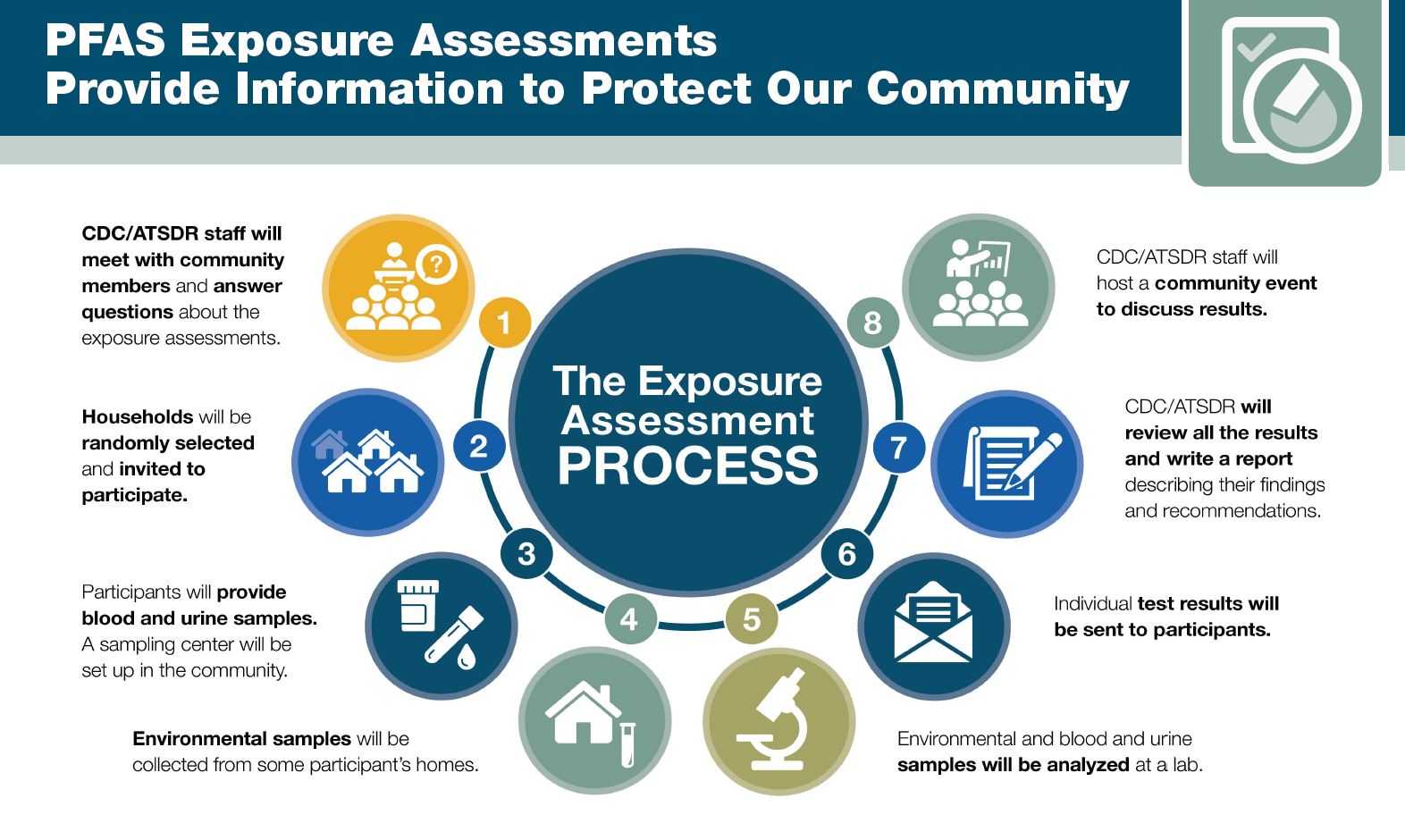At a glance
An exposure assessment (EA) is a way to look at whether people in a community might have been exposed to a certain type of substance in their environment. People are tested to see whether they have been exposed and answer questions to help identify possible sources.

Background
The 2018 National Defense Authorization Act authorized CDC/ATSDR to look at PFAS exposure in communities near current or former military bases that are known to have had PFAS in their drinking water. These exposure assessments built on the work of two CDC/ATSDR-funded pilot EAs. These EAs were conducted by the Pennsylvania Department of Health and New York State Department of Health using the CDC/ATSDR PFAS Exposure Assessment Technical Tools.
What the research reveals
The exposure assessments:
- Lead to a better understanding of environmental factors that affect PFAS exposure
- Produce information that can be used by public health professionals across the nation to help communities impacted by PFAS
- Inform future studies looking at the impact of PFAS exposure on human health
- Inform affected participants about their individual exposures to PFAS
- Help individual participants and their communities better understand their exposure to PFAS
- Provide information that communities can use to reduce PFAS exposure
Importance
An exposure assessment (EA) is a way to look at whether people in a community might have been exposed to a certain type of substance in their environment. People are tested to see whether they have been exposed and answer questions to help identify possible sources. Using this information, public health professionals provide guidance to help people reduce or stop exposure. An exposure assessment cannot determine what types of health problems the exposure might cause.
The Centers for Disease Control and Prevention (CDC) and the Agency for Toxic Substances and Disease Registry (ATSDR) conducted exposure assessments in communities known to have had Per- and polyfluoroalkyl substances (PFAS) in their drinking water. The amount of PFOA and PFOS in the drinking water in these communities, located near current or former military bases, exceeded the Environmental Protection Agency's (EPA) 2016 health advisory of 70 parts per trillion and/or applicable state guidelines in the past. The primary goal of these exposure assessments was to provide information to communities about levels of PFAS in their bodies. Results allow CDC/ATSDR to provide recommendations to reduce exposure. CDC/ATSDR will also use the data collected from these EAs to help inform future studies on PFAS exposure.

Site selection
CDC/ATSDR used a rigorous process to choose sites for the exposure assessments (EAs), starting by identifying all communities near current or former military bases that were known to have PFAS in their drinking water. CDC/ATSDR, then, examined other factors, such as:
- Estimated number of people exposed
- Magnitude of exposure
- Estimated length of time exposure took place
- Geographical location
- Type of water source (i.e., private wells vs municipal source)
In addition, the process also took into account the complexity of the drinking water system. This ensured that all potentially affected members of a community could be identified for possible inclusion. This gave CDC/ATSDR a good chance of learning information that is valuable to the selected communities and to other communities facing similar PFAS exposure. These selected sites are referred to as ATSDR-led EAs.
CDC/ATSDR funded two pilot exposure assessments that were conducted by the Pennsylvania Department of Health and New York State Department of Health using the CDC/ATSDR PFAS Exposure Assessment Technical Tools. They are referred to as pilot EAs.
The benefits of the exposure assessments extend beyond the communities identified. The lessons learned can also be applied to communities facing similar PFAS drinking water exposures.

